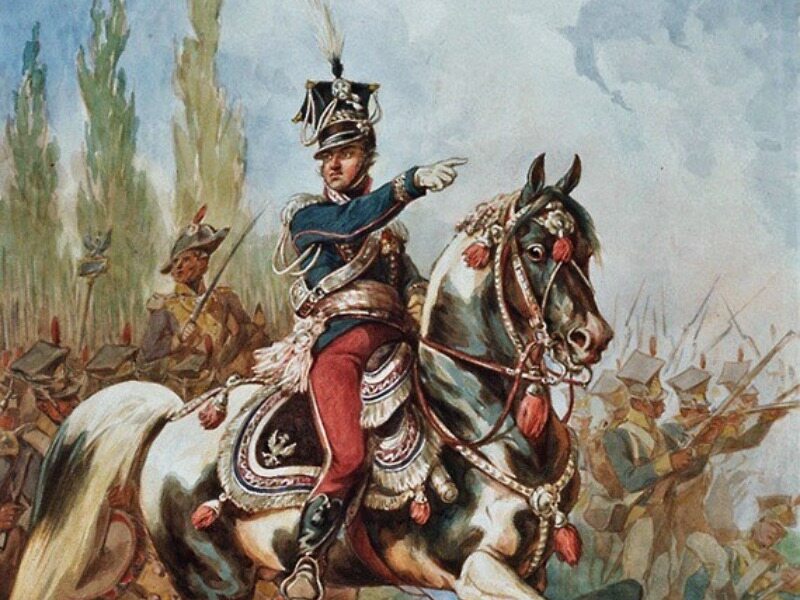
Polish legions in Italy were established on January 9, 1797. They were led by Jan Henrik Dabrowski. Although Poland did not exist for almost a year and a half, the Poles did not lose hope that their homeland would soon be reborn.
The Third Division of Poland
The situation of the Polish-Lithuanian Commonwealth in the second half of the 18th century was tragic. In 1772, the first division of Polish lands took place, which was carried out by Russia, Prussia and Austria. In 1788, the Great Sejm began, which lasted until 1792, and which was supposed to save Poland from inevitable destruction. During his time, the Constitution of May 3 (May 3, 1791) was adopted, which revolutionized the prevailing system in the Polish state, reformed the governance model and introduced many useful changes. Unfortunately, it was too late for much change; They could not be included even as a result of the armed struggle, that is, the so-called war to protect the constitution. In 1793, the second partition took place (Russia and Prussia took part in it).
A year later, Kosciuszko's rebellion began. The heroic rebellion failed to achieve its goals and the rebels were forced to capitulate on November 16, 1794. Less than a year later, on October 24, 1795, the three partitioning powers, Prussia, Austria, and Russia, announced the Third Partition of Poland. The Republic of Poland ceased to exist.
Polish legions in Italy
After the elimination of the Polish state by the three partitions, many Poles were forced to leave Poland. Some did not see a place for themselves under the rule of the occupier and decided to leave the country. Thousands of people ended up in France.
Already in 1794, during the Kosciuszko rebellion, the so-called agency, the Polish Independence Organization, which represented the Polish uprising in Paris.
The formation called “Polish Legions Supporting Lombardy”, better known in Poland as the Polish Legions in Italy, was created on January 9, 1797 at the initiative of Jan Henrik Dabrowski. That day, Dabrowski signed a treaty with the Lombard government agreeing to the creation of Polish troops under Polish officers. This happened thanks to the help of Napoleon Bonaparte, who received an order from Paris to use Poles willing to fight. Thus, the Polish legions found themselves in the service of the Republic of Lombardy, and the soldiers received payment from it (the French also sent Poles to Lombardy, because they themselves did not intend to pay).
The uniforms and banners of the Polish legions looked like Polish. Polish language and Polish military ranks were also used in their ranks. The soldiers had tricolor cockades attached to their uniforms, which referred to the French Revolution and emphasized the alliance between the Poles and the Republic. All soldiers and legion commanders received Lombard citizenship and the right to return to Poland after their service.
Polish legions in Italy numbered 7,000 soldiers in May 1797. Not only representatives of the nobility, but also everyone, regardless of origin, could enter the ranks of the units. Jan Henrik Dabrowski made sure that illiterate soldiers attended reading and writing courses. Lectures on Polish history are also planned. What was new was the fact that all soldiers, not only nobles, could hope for promotion and the rank of officer. This was a fairly new approach for Europe. Such “democratization” in the army took place at the beginning of the French Revolution.
Where did the legions fight?
While creating Polish legions in Italy, the Poles hoped that the dissolution of the Polish state was only temporary. The tense situation in Europe meant that the prospect of war between the superpowers (and invaders) was only a matter of time. Events were difficult to predict, but it was believed that during the turmoil of the war it would be possible to restore the structures of the Polish Republic. It was in the ranks of the legions that the song “Poland is not dead yet” was written, which was later called “Dabrowski's Mazurek”, the words of which were written by Jozef Wibicki. The lyrics of the song well reflect the mood that existed in the Polish ranks at that time.
The legions fought alongside General Napoleon Bonaparte. The first battles took place in April 1797 near Rimini, Verona and Lake Garda. Later they defended the Roman Republic and fought against the Kingdom of Naples. In 1801, after the signing of peace between France and Austria, most of the legions were sent to Hispaniola (Haiti), where the Haitian people fought against the French. Several legionnaires returned from America to Europe. Some died as a result of illness or battle, while others decided to settle permanently in Haiti.
In 1802, the rest of the legions were incorporated into the Italian army as auxiliary units under the name “Polacchi al soldo della Republica Italiana”. In the following years, the Poles fought against the English, among others. near Castelfranco and Calabria. When Napoleon's troops reached Poland in 1807, Polish soldiers formed the Polish Legion (Legia Nadwiślańska). Many soldiers from his ranks later formed the army of the Kingdom of Poland (after 1815) and fought in the November Uprising.
About 35,000 soldiers passed through the Polish legions in Italy, of whom 20,000 died.
Legions, although they did not directly fight for Polish independence, were for many soldiers a real school of patriotism and a place where the memory of Poland was still alive.
Also read:
Tadeusz Reitan. The last one is right. Who was the most famous Polish MP?Also read:
There is nothing left to save. Seym of Grodno, betrayal and divisionsAlso read:
“Like Czarniecki (…) I will return across the sea.” What do these words of the Polish national anthem mean?
(tags translate)legions
